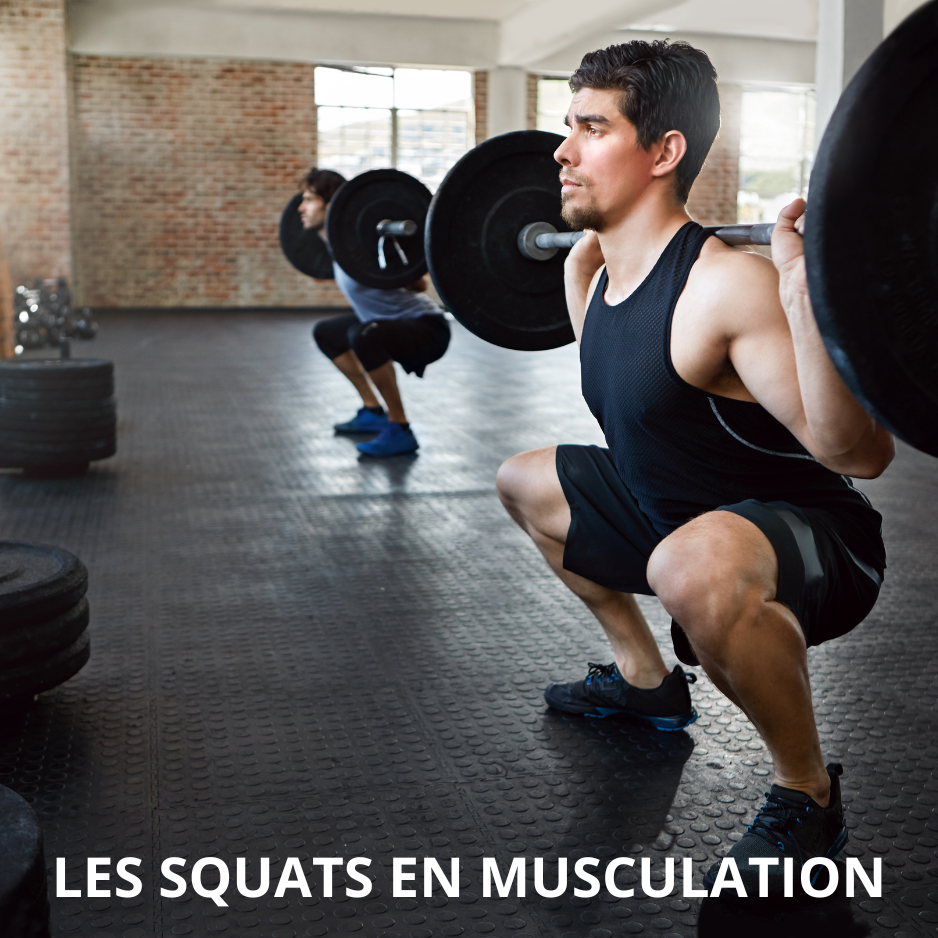Running, Bodybuilding or both?
Running or bodybuilding should you choose? We could even broaden the question to Endurance Sport or Strength Sport, are the two activities complementary? There was a time when this refrain was permanent: Don't waste your time with bodybuilding, a runner must run! We're not smiling, it's a vision that still persists among certain coaches, and the complementarity of these two activities is ultimately quite recent.
Runners, whether they are sprinting, middle distance, half, marathon, triathlon, trail running, often wonder if strength training would have beneficial effects on their performance. The same question arises for other aerobic endurance activities such as cycling, swimming or cross-country skiing, Running, Strength training or both?
For most of these endurance athletes, the answer is positive. Several researchers have attempted to understand the effects of weight training on aerobic sports performance. Obviously, the results obtained vary depending on the type, frequency and duration of training, the choice and number of exercises as well as the number of sets and repetitions per exercise. Furthermore, the training experience, gender, age and motivation of the participants could have varied the results. Despite this, it is possible to say that in general, strength training combined with cardiovascular training leads to better performance than cardiovascular training alone. Note, however, that the results are more marked when the participants are not high-level athletes. Strength training can be very beneficial for athletes who participate in endurance sports, as it can help improve their performance by strengthening their body and increasing their muscle power. As examples, here are some reasons why bodybuilding can be interesting for endurance athletes:
Muscle strengthening : Endurance sports like running or cycling put a lot of stress on muscles and joints, which can lead to injury. Strength training can help strengthen muscles, tendons and ligaments, which can reduce the risk of injury.
Increased muscle power : Strength training can help increase muscle strength, which can improve the speed and efficiency of the stride or pedal stroke. This can translate into better performance on the field. This is one of the reasons why, for example, Stimium PreWorkOut is used as much by endurance athletes as by athletes in sports more focused on Strength to improve resistance to effort and prepare the body for muscle strengthening loads.
Improved muscular endurance : Strength training can also help improve muscular endurance, allowing endurance athletes to work longer at higher intensities. This can help them manage muscle fatigue better and maintain their performance for longer.
Prevention of muscle imbalances : Endurance athletes tend to use the same muscle groups repetitively, which can lead to muscle imbalances and injuries. Strength training can help correct these imbalances and prevent associated injuries.
How can strength training help aerobic performance?
Running, Bodybuilding or both – both of course! The possible improvement in running or cycling performance following strength training is partly attributable to a reduction in the energy cost of the activity performed. This means that a runner or cyclist who has trained in strength training expends less energy for a given speed of movement or the same amount of energy for a higher speed of movement. The reduction in energy cost following strength training is thought to be due to an increase in strength, due to a better ability to contract a greater number of muscle fibers and synchronize them. In addition, improving motor coordination when training in bodybuilding would also reduce energy costs. Furthermore, localized improvement in endurance through strength training can also help aerobic performance. Indeed, better endurance of the muscles used during cardiovascular activity helps ward off fatigue. Thus, in a cyclist, quadriceps with little endurance can limit performance. Finally, when aerobic activity requires an increase in intensity such as during a final sprint in a race or when climbing a slope in cross-country skiing, strength training for maximum strength and power can lead to better performance.
However, the endurance athlete, runner or cyclist, must make the right choices of muscle strengthening exercises, because it is these training choices which will determine the only improvement in aerobic performance.
Overall exercises : For reasons of specificity, the exercises chosen must contract the same muscle groups as the cardiovascular activity. For example, since it is the muscles of the thighs and legs that are used in cycling and running, it goes without saying that muscular exercises of the lower limbs are to be favored. Overall leg pushing exercises that also use muscles that contract when running and cycling, such as squats or lunges, are the most effective.In addition to improving the strength and endurance of the muscles used during aerobic activity, certain overall exercises can improve balance and proprioception (body perception). For example, an exercise that creates instability, such as a single-leg squat or lunge supported on an exercise ball, helps achieve this goal. These qualities are even more decisive for aerobic activities such as cross-country skiing or cross-country skiing, and of course trail running.
Localized exercises : Localized exercises can be interesting in order to target work and fatigue to a specific muscle group. For example, since the gluteal muscles are heavily used in skating, the abduction exercise on a machine is a good choice to strengthen them. For the runner, an exercise that contracts the hip flexor muscles is also ideal. Finally, an isolated exercise that uses the calf muscles is relevant for both cyclists and runners.
Exercises targeting the muscles that stabilize the trunk and pelvis : Global and targeted exercises that strengthen the stabilizing muscles of the trunk and pelvis are also good choices, regardless of the aerobic activity performed. This type of exercise can improve performance by promoting better technique and it can also reduce the risk of injury. For example, strengthening the hip abductors and adductors (muscles that move the thighs toward and away from each other) can reduce a runner's risk of knee injuries. Exercises that work the abdominals and core extensors can also limit upper body rotations when running. For the cyclist, strengthening and frequent stretching of the trunk extensor muscles, located along the spine, makes it easier to maintain a leaning, more aerodynamic position on the bike.
Muscular Power Exercises : Exercises performed with the intention of maximum speed for a portion or the entire movement are appropriate for improving aerobic performance when sudden increases in intensity are required. For example, jump squats can help push the legs off the wall during a turn when swimming or when accelerating when cycling. Jumping exercises without bending the knees will train “foot responsiveness”. This type of exercise will allow the runner to reduce the contact time with the ground and therefore improve their speed.
Eccentric Exercises : Exercises that emphasize eccentric contractions – when the muscle contracts while lengthening – have been shown to reduce the energy cost of running. Eccentric exercises using the muscles of the back of the thigh, the hamstrings, are preferred. For example, the knee bend on apparatus can be performed using both legs when lifting the load and only one leg during the descent.
Set the number of repetitions
In bodybuilding, the load combines with the number of repetitions to influence the body's adaptation to training. For example, a heavy load associated with a low number of repetitions improves maximal muscular strength while a light load with a high number of repetitions improves muscular endurance. A reduction in energy cost as well as an improvement in aerobic performance was observed with a highly variable number of repetitions.
Less than 6 repetitions
A small number of repetitions combined with a large load allows the athlete to increase his maximum strength. For example, the cyclist will be able to accelerate more quickly during a breakaway or quickly increase his speed at the start of a climb. The runner, for his part, will be able to sprint better at the end of the race. However, the fact that this number of repetitions is accompanied by heavy loads increases the risk of injuries during strength training.
From 6 to 12 repetitions
The athlete will improve his muscular strength by performing exercises with a load allowing 6 to 12 repetitions. On the other hand, it will improve less than by performing a maximum of 5 repetitions. It will also improve his muscular endurance, but less than if he performed more than 12 repetitions. So, this number of repetitions is a compromise between increasing maximum strength and increasing endurance. Frequent, intense workouts that include a sufficient number of sets can cause an increase in muscle mass, especially when performing a maximum number of repetitions between 6 and 12. However, an increase in muscle mass means an increase in muscle mass. heavier body weight that can limit the performance of a cross-country skier, cyclist, or runner who must travel long distances. Endurance athletes should mainly focus their training on cardio and not on bodybuilding. In this way, he will avoid a significant increase in his muscle mass which could harm his performance, while benefiting from the positive effects of bodybuilding training.
More than 12 repetitions
A large number of repetitions will be an important asset for muscular endurance, that is to say to delay fatigue during long-term efforts or during intense efforts lasting more than two minutes. The runner will benefit from this for all distances between 400 meters and a marathon. As for the cyclist, he will benefit from it in all circumstances, but less so for very short sprints. During his cycling career, Lance Armstrong trained regularly in bodybuilding. However, history does not say which, bodybuilding or doping, was more beneficial to the sporting performance of the fallen athlete!
Set training frequency, number of exercises and sets
Strength training, although recommended for endurance athletes, should not replace aerobic activity. It should be considered as an addition to it. Normally, 2 to 3 workouts per week should be sufficient, especially if the athlete is a beginner in bodybuilding. A session of around 30 minutes is appropriate, i.e. around 2 to 4 sets of 4 to 5 exercises. Some studies have demonstrated improved aerobic performance after just 3 weeks of strength training. For more advanced athletes, it is possible to increase the frequency up to 4 to 5 times per week in order to obtain better results. However, during competition season, it is best for them to do a little less to avoid fatigue, as they will be training more often and more intensely in cardio, and will need to be rested on the day of a competition.
In conclusion, to improve performance and reduce the risk of injury, strength training is recommended as a complement to aerobic training for runners, cyclists and other athletes who engage in endurance activity. The improvement in performance is mainly attributable to a reduction in the energy cost of the aerobic activity performed. In terms of nutrition, for an athlete more focused on endurance but wishing to strengthen their muscles to improve their performance over long periods of time, the Stimium Range offers numerous options for muscle strengthening, such as Stimium® [C] Whey , Stimium® Iso Hwy or Stimium® VegPro to maintain a good protein intake for muscle fibers subjected to long training, Stimium BCAA Instant , to help muscle development but also muscle recovery with BCAA 2:1:1 enriched with glutamine, Stimium Pwr Creatine and Power Creatine Tabs , which increase the production of ATP (adenosine triphosphate), the fuel for our cells and muscles. Rather focused on endurance, athletes will consume in particular our Stimium® Boost and Stimium® Pro-Nrj Gums, and obviously for recovery with Stimium® Mc3 or Stimium® Mc3 powder to reduce the risk of cramps, and combat muscle fatigue and oxygenate the muscles. muscles, also subjected to the workload of endurance training, but also of muscle strengthening training.
In short, between the choices Running, Bodybuilding or both, if you need to have time available, you should not hesitate and of course practice both. Many leisure sports allow these two components to be combined, for example:
- Triathlon : Triathlon is a sport combining swimming, cycling and running, making it one of the most complete sports in terms of physical fitness. It involves great cardiovascular and muscular endurance, as well as high strength and muscular power for the different events.
- Boxing : Boxing is a sport that requires both great endurance and muscular power, as well as excellent coordination and agility. Fast, repetitive movements work the muscles of the upper extremities, while strength training exercises, such as push-ups and pull-ups, build strength and power.
- Climbing : climbing is a sport that uses the whole body, particularly the arms, legs and trunk. It requires great muscular endurance, strength and coordination, as well as great flexibility and agility. Climbers also work on their grip strength, balance and coordination.
- Rugby : Rugby is a contact sport that requires great strength, great muscular power and great cardiovascular endurance. Rugby players must be able to run, jump, tackle, push and pull, while being able to withstand bumps and impacts.
- Cross-Country Skiing : Cross-country skiing is an endurance sport that primarily uses the leg muscles, but also involves significant use of the arms and trunk to maintain balance and coordination. Cross-country skiers need great muscular and cardiovascular endurance, as well as muscular strength and power to cope with different terrain conditions.
Even for the triathlete or marathon runner, training 1 to 2 times a week, by doing boxing or climbing for example, will allow you to work new muscle chains, combining endurance and bodybuilding, optimizing your condition. physical, and otherwise improving your health.
Running, Bodybuilding or both – both my general!






